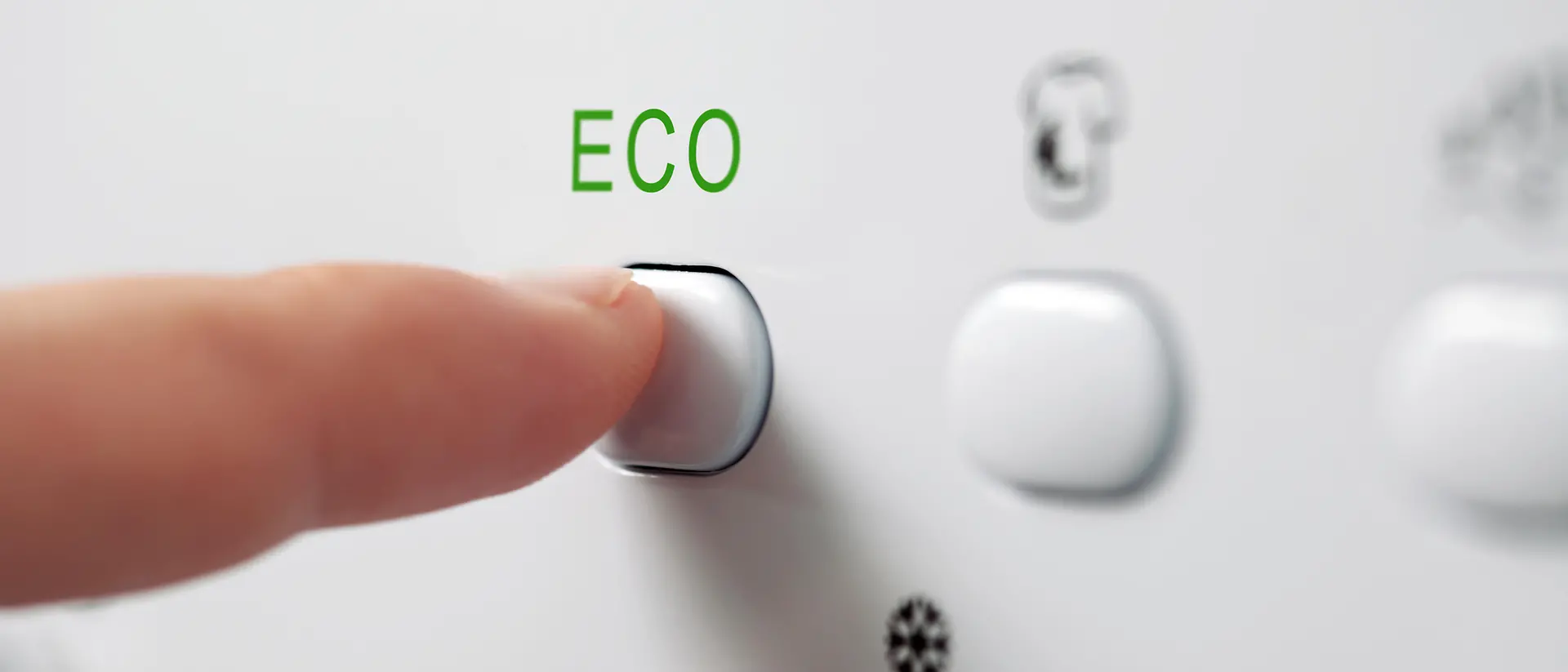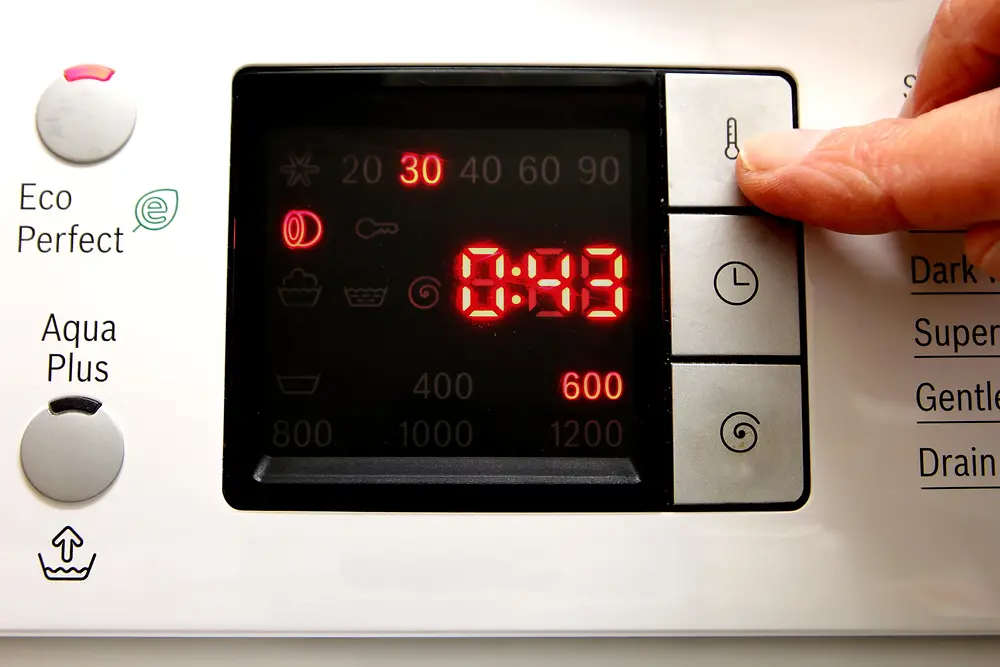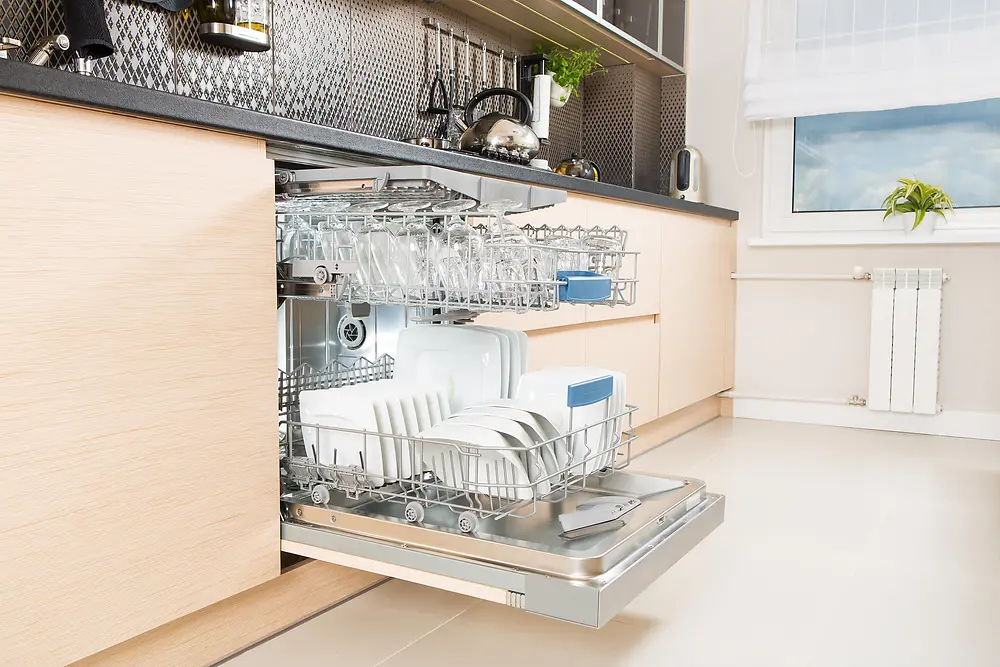Discover the brands and technologies from our business units Henkel Adhesive Technologies and Henkel Consumer Brands.
6 tips to reduce energy at home

Despite the advances in renewable energy sources, a lot of energy still comes from burning fossil fuels. This means that too much carbon dioxide and pollution is released into the environment. At the same time, there are many leverages to cut energy consumption and improve energy-efficiency every day. This is true for companies as well as for every individual.
As a company, Henkel is highly invested in developing and implementing energy efficient solutions for its operations and along the entire value chain. This includes reducing the carbon footprint of production by 65 percent by 2025 and by 75 percent by 2030. Because our brands and technologies are used millions of times every day in households and industrial processes, we have committed to developing innovative products that require and consume less energy.
Did you know that up to 90 percent of a product’s ecological footprint is generated during the use phase? That is why we encourage consumers to be more mindful of how they use products. As a baseline, you can measure how much CO2 you release on average with this footprint calculator.
If you want to reduce your footprint, try out the following tips to see how much energy you save.
1. Reduce the amount of heat you use in your home
For those who have radiators in their homes, the rooms don’t all need to be the same temperature. For example, people sleep better when the bedroom is between 16 and 18 degrees Celsius. Your kitchen also heats up when you use the stove or the oven. At night, you can even turn down the heat and instead curl up under a fluffy blanket. For those with central heating and air conditioning, by keeping your house a couple degrees warmer in the summer and a couple degrees cooler in the winter, you’ll save more energy than you know.
2. Wash dishes and clothes in cool water
As you know, washing dishes and clothes can take a lot of energy. However, most of that energy comes from heating up water. Even by reducing the water temperature from 40 degrees Celsius to 30, you can save up to 40 percent energy per wash load. Many detergents nowadays are activated even in cold water. By reducing the water temperature, you can overall reduce the amount of energy needed to wash your things.
3. Run your dishwashers and laundry machines when they are full
These appliances work better when they are full. And when you wait until they are full, you don’t need to use them as often, which saves you time from emptying them. As an extra energy-saving bonus, instead of using the drying setting on your dish washer or a clothing dryer, let both dishes and clothing air dry. You’ll prevent your dishes and clothing from getting damaged, while saving energy.
4. Completely turn off all electronics
Make sure to turn off any electronics that you are no longer using, such as radios and lamps. For some electronics, like your televisions and computers, that means using a multi-outlet power strip with a switch. When you press the power button on your TV, you may think it’s off, but really, it’s only in stand-by mode. Using a power strip with a switch lets you cut off the power to the device completely, which can save you energy in the long run.
5. Take care of your refrigerator and freezer
Most fridges and freezers work best when they are full, even if they are only full of water bottles. However, you have to make sure not to overfill your refrigerator because that could lead to poor airflow and cause the fridge to work harder to keep the food cool. It’s also important to defrost your freezer once or twice a year. If you have a thick layer of ice in your freezer, it can increase energy use by 30 percent or more. The thicker the layer of ice is, the more energy it takes for the freezer to keep everything at the same temperature.
6. Charge your phones during the day
It may be convenient to charge your phones over night, but it uses more energy than necessary. Most personal electronic devices, like phones, tablets and eReaders only need a couple hours to fully charge. You also want to avoid using your devices when they are plugged in because it takes longer for your devices to charge and it causes them to overheat, which weakens the battery.











